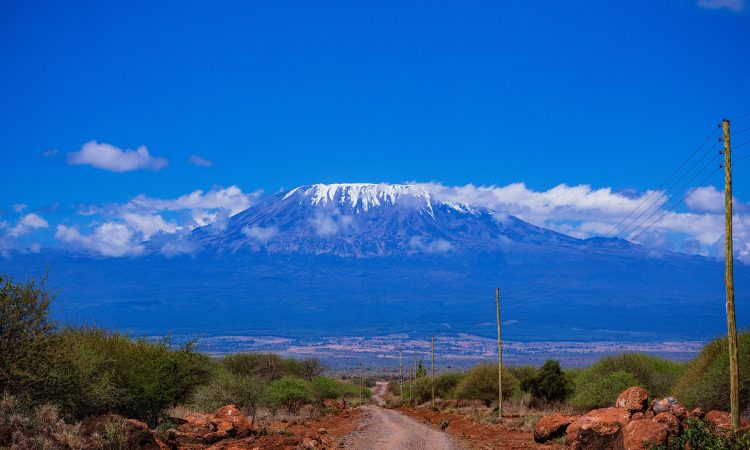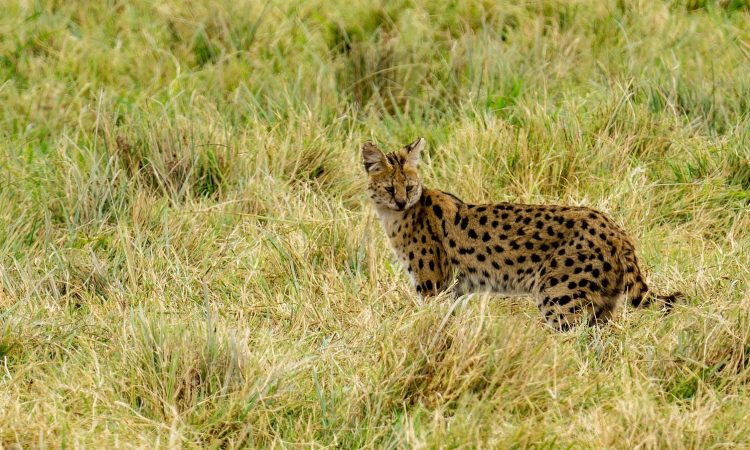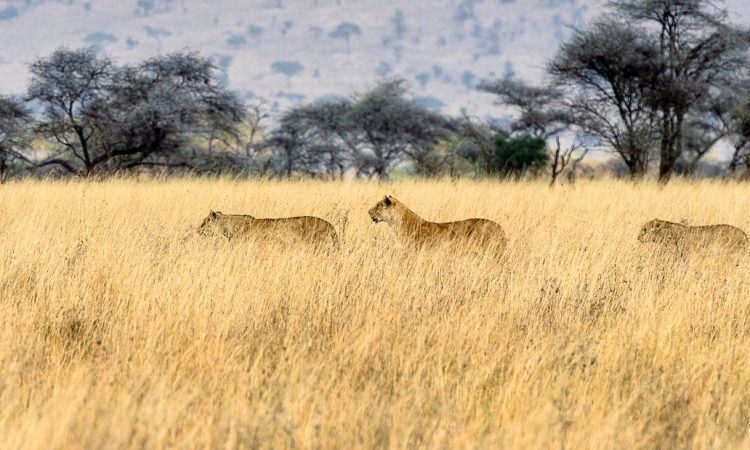Nyerere National Park, formerly known as Selous Game Reserve, is located in East Africa, Tanzania. Tanzania is one of the top tourism destinations in Africa, renowned for its vast wildlife species, the Great Wildebeest Migration, and numerous national parks, all delivering a thrilling African safari experience for most travelers. With over 20 national parks in the country, Nyerere National Park stands out as one of the best to visit.
Wildlife populations are abundant at Nyerere National Park, although the reserve is large and animals are dispersed across the plains. In the 1970s, Selous had the highest number of elephants in the world, with an estimated 109,000 elephants in the park. Unfortunately, the numbers reduced to about 13,000 elephants by 2013.
Nyerere National Park is one of the largest national parks in Africa, situated in the southeastern part of Tanzania. It boasts diverse wildlife, making it one of the best safari destinations in the country. In 2005, Selous Game Reserve was considered a Lion Conservation Unit. The approval of uranium deposits by UNESCO, although highly criticized by other environmentalists and organizations, is another part of its history.
The area now known as Nyerere National Park was first designated as a protected area in 1896 by the German governor of Tanganyika at the time. In 1905, the protected area became a hunting reserve, and that’s how it was named after the famous big game hunter, Frederick Selous.
Nyerere National Park is the newest park in Tanzania, established in 2019, and named in honor of the former late president of the Republic of Tanzania, Julius Nyerere. It covers an area of 30,893 square kilometers, encompassing the northern part of the former Selous Game Reserve.
The story of Selous National Park started when a German governor declared the area a protected wildlife hunting reserve in 1896. The reserve was later renamed in 1922 as Selous Game Reserve, in honor of Frederick Selous, who transitioned from a big game hunter to a wildlife conservationist. In 2019, the reserve was upgraded into a national park and named after the former and first president of Tanzania, Julius Nyerere.
Wildlife Watching
Nyerere National Park is still a pristine park, providing excellent wildlife viewing opportunities for visitors. During game drives, tourists can spot wildlife such as lions, Cape buffalos, cheetahs, leopards, zebras, giraffes, black rhinos, elephants, elands, wildebeests, African wolves, African wild dogs, sable antelopes, gazelles, warthogs, Nile crocodiles, and many others.
Walking Safaris
Nyerere National Park offers visitors the opportunity to explore its flora and fauna on foot, with many established walking trails leading to different destinations. An experienced armed ranger guide will accompany you on the walk while explaining the importance of plants, various species of birds, and wildlife.
Bird Watching
Nyerere National Park is a birders’ paradise with over 400 recorded species. Some examples of birds recorded include African skimmers, malachite kingfishers, Bohm’s bee eaters, African fish eagles, palm nut vultures, African spoonbills, black-winged stilts, pearl-spotted owlets, broad-billed rollers, brown-necked parrots, Dickinson’s kestrels, Pels’ fishing owls, Bohm’s bee eaters, northern carmine bee eaters, broad-billed rollers, brown-headed parrots, rocket-tailed rollers, knob-billed ducks, Egyptian geese, fulvous whistling ducks, helmeted guineafowl, black-bellied bustards, little egrets, thick-billed cuckoos, white-backed night herons, yellow-billed storks, Boehm’s bee eaters, yellow-bellied bulbuls, Livingstone’s flycatchers, spotted-flanked barbets, red-billed helmet shrikes, red-throated twin spots, purple-banded sunbirds, brown-necked parrots, rock pranticole, white-fronted bee eaters, white-headed lapwings, grey-headed kingfishers, red-necked spurfowls, and many others.
Boat Rides
Boat rides at Nyerere National Park can be enjoyed on the great Rufiji River. This is the best way to encounter aquatic wildlife like hippos and crocodiles, as well as observe hundreds of water birds. The delta of the Rufiji River harbors one of the largest mangrove forests in the world. The spectacular Rufiji River flows into the Indian Ocean in a chasm that is 100 meters wide and 100 meters deep, cascading into the Indian Ocean. Animals usually concentrate on the riverbanks during the dry season. Boat cruises typically last about 2 hours, offering scenic views, wildlife, and bird watching opportunities.
Cultural Encounters
Combine your trip to Nyerere National Park with a visit to the local communities. The outskirts of the park are inhabited by various tribes, including the famous Masai people. You can learn about the culture, customs, and day-to-day life of the local people and also participate in African traditional dances performed by the locals. Tourists can engage in the locals’ daily activities like cattle grazing, milking, cooking, and more. Don’t forget to buy some handmade crafts as souvenirs to support the local communities.
Hot Air Balloon Safaris
At the northern part of the park, you can find the mighty picturesque Rufiji River, the largest river in the country, providing a breeding ground for hippos and crocodiles, as well as supporting aquatic birds.
Nyerere National Park is located about 230 kilometers from Dar es Salaam. The park can be accessed from Dar es Salaam or Arusha, with daily scheduled flights to different airstrips within the park. Before booking a flight to Nyerere National Park, make sure your landing will be close to the lodge where you intend to stay to avoid long transfers from airstrips to hotels.
Fishing
One of the best ways to relax at Nyerere National Park is fishing. Tourists can go fishing on the Rufiji River with an experienced fishing guide. Fishing equipment can be hired at a small fee at the park, and fish caught in the river are released afterward.
Where to Stay
Some of the accommodation options where you can stay while at Nyerere National Park include Selous Serena Camp, Sand Rivers, Rufiji River Camp, Stieglers Hoerge Camp, Mbuyu Safari Camp, Serena Mivumu River Lodge, Beho Beho, Kiba Point Selous, and Lake Manze Tented Camp, to mention a few.
Best Time to Visit
Nyerere National Park can be visited all year round, but the best times to go to the park are during the dry seasons of July to September and December to February when the weather conditions are favorable, and wildlife is concentrated around water points.
Mikumi National Park
Tourists can combine their safari to Nyerere National Park with a visit to Mikumi National Park, also renowned as “Little Serengeti.” The park was established in 1964, covering an area of 3,230 square kilometers and bordering Nyerere National Park. Mikumi National Park has two distinctive areas divided by Tanzanian A-7 highway. The park is also home to a subspecies of giraffe that biologists consider a link between the reticulated giraffe and Masai giraffe.
Mikumi National Park is often compared to the Serengeti plains and also harbors various species of wildlife. Some of the animals you’re likely to see while on a game drive include olive baboons, black kudus, lions, leopards, elands, impalas, sable antelopes, hartebeests, African wild dogs, zebras, buffalos, wildebeests, hippos, and elephants, to mention a few. Animals are usually concentrated at the hippo pool during the peak of the dry season.
Mikumi National Park is also home to over 400 species of birds, and bird enthusiasts can spot species like the northern pied babbler, African hawk eagle, African grey hornbill, long-tailed fiscal, green hood hoopoe, African open bill, Marabou stork, northern carmine bee-eater, southern ground hornbill, pale batis, red-billed oxpecker, Shelley’s sunbird, purple-crested turaco, yellow-throated longclaw, cardinal woodpecker, malachite kingfisher, long-tailed fiscal, and many others. The best time for birding is from November to April when migratory birds are present in the park.






